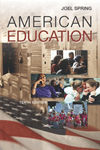 |
1 |  | 
According to Nieto, multiculturalism for social empowerment attempts: |
|  | A) | To maintain cultural identity while, at the same time, promoting values of social justice and social action. |
|  | B) | Promote values of social justice and social action. |
|  | C) | To maintain U.S. cultural identity and promote values of social justice and equality of opportunity. |
|  | D) | To maintain cultural identity while at the same time, stressing the importance of learning the acquiring the dominant culture. |
 |
 |
2 |  | 
A cultural frame of reference |
|  | A) | Refers to the manner in which people interpret their perceptions of the world. |
|  | B) | Is formed, in part, by a person's family's historical experience. |
|  | C) | Can result in differing interpretations of the same event. |
|  | D) | All of the above |
 |
 |
3 |  | 
Ethnocentric curriculums in the United States have been enthusiastically accepted by most educators because they attempt to give equal value to different cultural traditions and they replace a Eurocentric view of the world with a different cultural frame of reference. |
|  | A) | True |
|  | B) | False |
 |
 |
4 |  | 
English as a second language programs are |
|  | A) | The same as two-way bilingual programs, in that their purpose is to make students proficient in both their mother tongue and in English. |
|  | B) | Always taught by teachers who speak the language of the students. |
|  | C) | Programs that teach students English so that they can learn the content of instruction in English, and unlike bilingual programs, no attempt is made to teach reading and writing in the native language of the students. |
|  | D) | Answers b and c. |
 |
 |
5 |  | 
The term which refers to groups that were forcefully incorporated into the United States is: |
|  | A) | Slaves |
|  | B) | Dominated cultures |
|  | C) | Immigrant groups |
|  | D) | Dominant culture |
 |
 |
6 |  | 
The ethnic studies movement resulted in the integration of content into the curriculum dealing with dominated and immigrant cultures, women, and people with disabilities. |
|  | A) | True |
|  | B) | False |
 |
 |
7 |  | 
As applied to the United States, Tove Skutnabb-Kangas' A Universal Convenant of Linguistics Human Rights |
|  | A) | Is already a part of the U.S. Constitution because of the First Amendment's protection of free speech. |
|  | B) | Would mean that students whose mother tongues were not English would have the right to receive instruction in their mother tongues. |
|  | C) | Would mean that students whose mother tongues were not English would have the right to receive instruction in their mother tongues and therefore could refuse to learn English. |
|  | D) | Answers a and b. |
 |
 |
8 |  | 
Lisa Delpit believes that the education of dominated groups should instruct children |
|  | A) | In the culture of the home. |
|  | B) | Using Afrocentric curriculums. |
|  | C) | In the culture of power. |
|  | D) | Using Eurocentric curriculums that do not emphasize critical thinking. |
 |
 |
9 |  | 
Which of the following is false? |
|  | A) | Low academic achievement results from dominated cultures' holding negative feelings about schools. |
|  | B) | Some members of dominated groups believe that "acting white" is required for success in school. |
|  | C) | All students from dominated cultures begin school believing in their ability to achieve. |
|  | D) | Conflicts with school personnel and other students can heighten distrust of school and a rejection of school rules. |
 |
 |
10 |  | 
Bicultural education means being able to function in another culture without losing ties to one's original culture. |
|  | A) | True |
|  | B) | False |
 |
 |
11 |  | 
There are several specific types of bilingual education, including |
|  | A) | Maintenance bilingual programs, Americanization programs, transitional bilingual programs, and two-way bilingual programs. |
|  | B) | Maintenance bilingual programs, Americanization programs, and transitional bilingual programs. |
|  | C) | Maintenance bilingual programs, transitional bilingual programs, and two-way bilingual programs. |
|  | D) | Maintenance bilingual programs, student exchange programs, transitional bilingual programs, and two-way bilingual programs. |
 |
 |
12 |  | 
Since endorsement of a Universal Convenant of Linguistics Human Rights, as originally written, makes it possible to recognize minority language rights while at the same time recognizing that there should be enough students to make it economically feasible to operate classrooms in that minority language, most U.S. policymakers would support amending the Bilingual Education Act. |
|  | A) | True |
|  | B) | False |
 |



 2002 McGraw-Hill Higher Education
2002 McGraw-Hill Higher Education